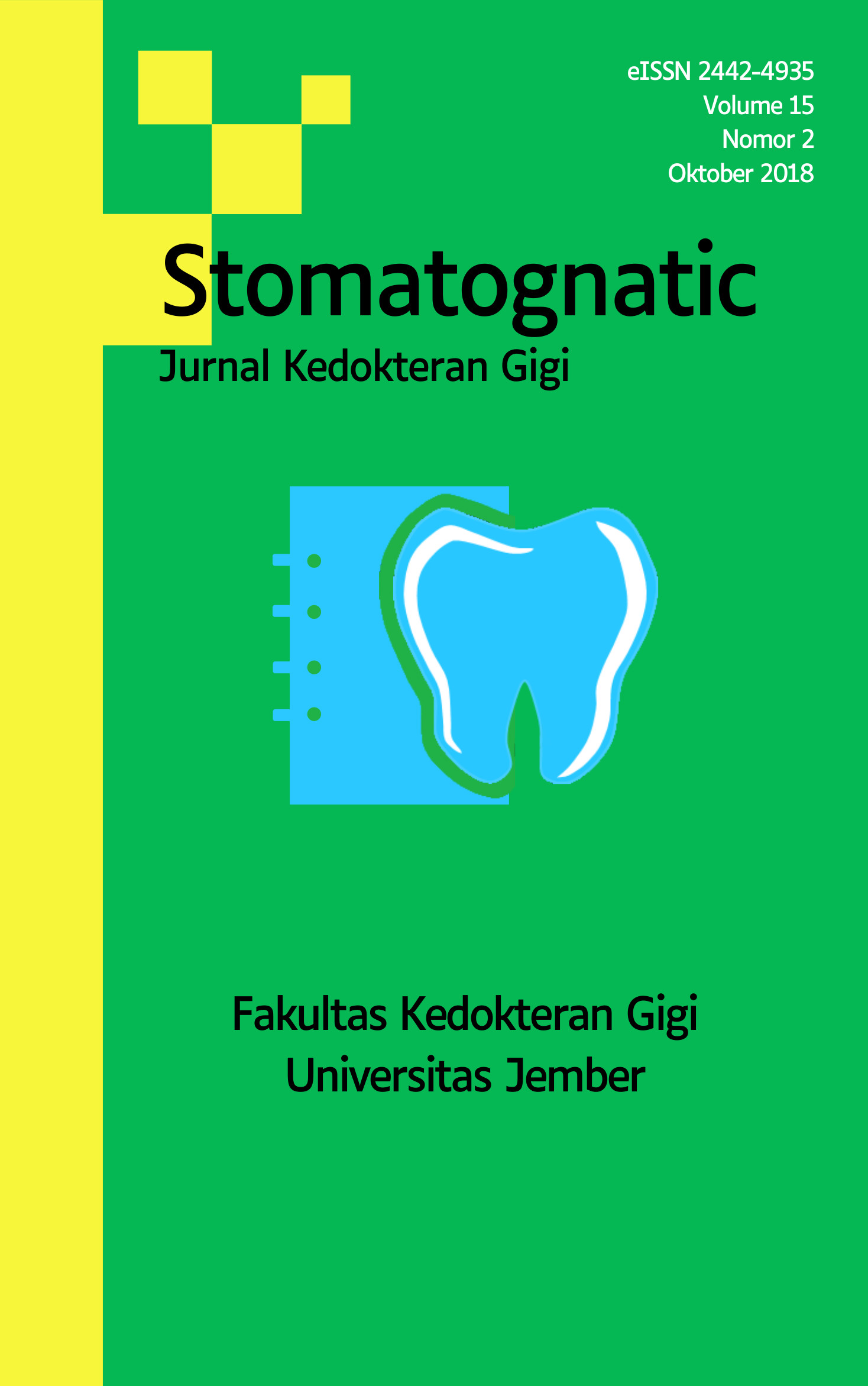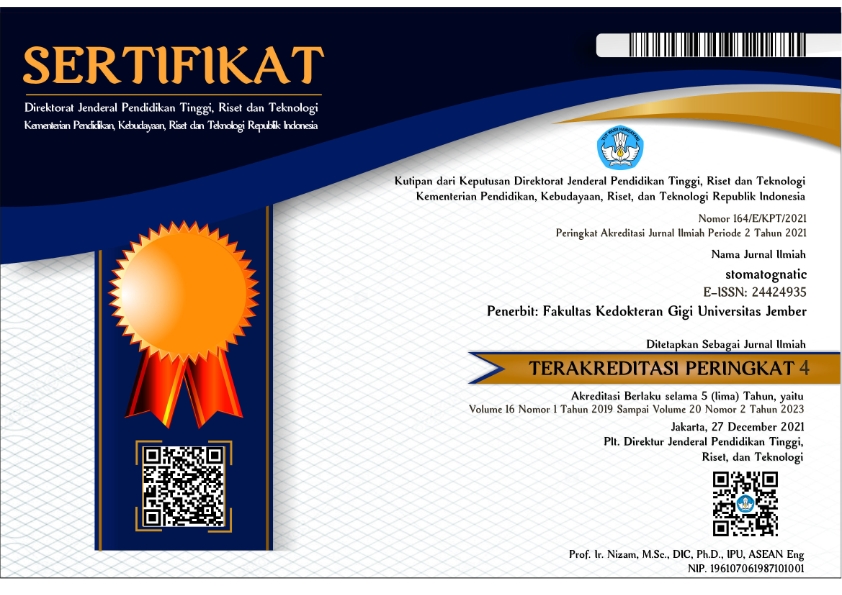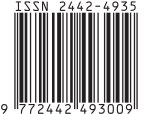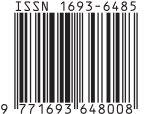Pengaruh Kumur Ekstrak Daun Ungu Terhadap Jumlah Bakteri dalam Saliva
Abstract
Caries is the most problem in oral health. The main etiology of the disease dominated by bacterial colonization, can be found in saliva. Bacteria control were performed by using antibacterial agent. Purple leaves extract (Graphtophyllum pictum L.Griff) contains of antibacterial agent namely flavonoid, triterpenoid, alkaloid, glycoside, saponin and tannin. The objective of this study was to examine the effect of gargling with 10% purple leaves extract on bacteria’s count in saliva. In this study 15 subjects were divided randomly into 3 groups (treatment, positive and negative control). Each of groups consist of 5 persons. Treatment group gargled with 10% purple leaves extract, while positive control group gargled with 0,2% Chlorhexidine gluconate and negative control group gargled with aquadest for 1 minute consecutively. Before and after treatment saliva samples were collected in sterile container, incubated, cultivated on Brain-Heart Infusion Agar (BHIA) for 2 x 24 hours and counted bacteria’s colony in saliva by using colony counter. Analyzing data with Anova and LSD test. The results showed that 10% purple leaves extract decreased bacteria’s count in saliva (p<0,05). There was no significant difference between the number of bacteria’s colony in samples who gargled with 10% purple leaves extract and 0,2% Chlorhexidine gluconate
(p>0.05). In conclusion, gargling with 10% purple leaves extract may decrease bacteria’s count in saliva and has
similar potency as 0,2% Chlorhexidine gluconate








